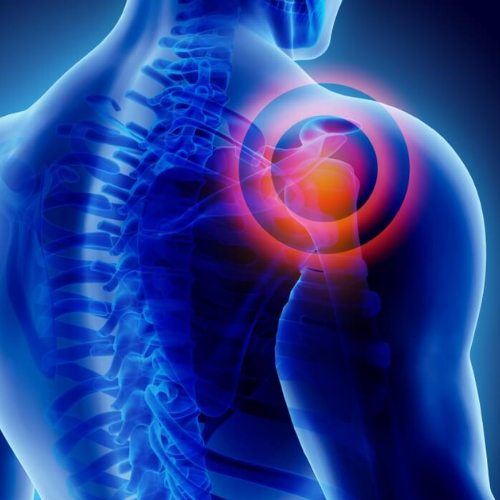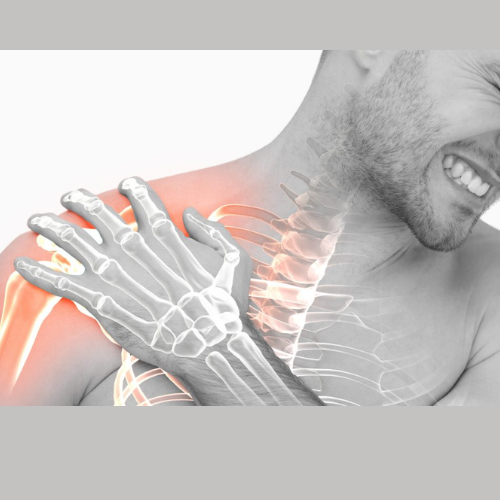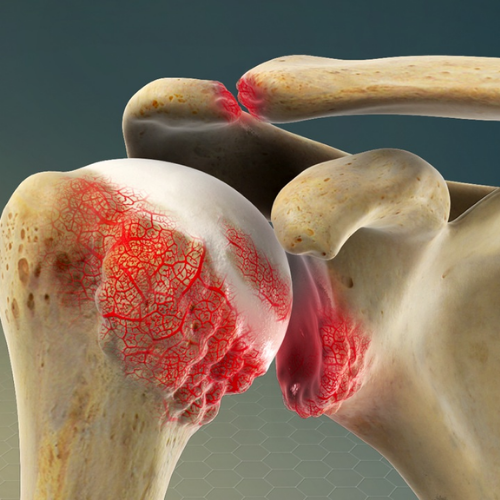Working Time
Working Time
Book Appointment
Book Appointment
+

Frozen shoulder, also known as adhesive capsulitis, is a condition characterised by pain and stiffness in the shoulder joint. It typically progresses through three stages: freezing, frozen, and thawing, with each stage lasting several months to years.
Symptoms:
- Pain in the shoulder joint, often worsening at night due to inflammation and stiffness.
- Limited range of motion in the shoulder, particularly difficulty raising the arm overhead or reaching behind the back due to pain and restricted movement.
- Stiffness and tightness in the shoulder joint, impacting daily activities like reaching, dressing, and grooming.
Diagnosis:
It is usually diagnosed based on signs and symptoms. Rarely, Ultrasonography and MRI may be advised to confirm or rule out other conditions.Management Approach:
Conservative Treatments:
· Physical Therapy: Stretching and strengthening exercises are often prescribed to improve range of motion and reduce stiffness in the shoulder joint. Heat and Cold Therapy: Application of heat or cold packs may help alleviate pain and reduce inflammation.
Pain Management: Over-the-counter or prescription medications such as NSAIDs (Nonsteroidal Anti-Inflammatory Drugs) or corticosteroid injections may be recommended to manage pain and inflammation.
·Joint Hydrodistension: Joint hydrodistension, also known as hydrodilatation, is a procedure where fluid (usually saline solution) is injected into the shoulder joint capsule under pressure to stretch and expand the capsule.
This procedure helps to break up adhesions and scar tissue within the joint capsule, improving range of motion and reducing pain. It is often performed under ultrasound or fluoroscopy guidance to ensure accuracy and safety.
·Rotator cuff interval injection: A procedure wherein medication is injected directly into the rotator cuff interval, which is the space between specific tendons within the shoulder joint capsule near the coracohumeral ligament which is the main ligament affected in a frozen shoulder. The injection typically includes a combination of corticosteroids and a local anaesthetic.
· Pulsed Suprascapular Nerve Neuromodulation: It is a minimally invasive procedure that involves delivering pulsed electrical stimulation to the suprascapular nerve, which innervates the shoulder joint.
This neuromodulation technique aims to interrupt pain signals from the shoulder joint to the brain, thereby reducing pain and improving function. The procedure is typically performed using percutaneous electrodes placed near the suprascapular nerve under fluoroscopic guidance.
It may provide pain relief and improve shoulder function in some patients with frozen shoulders who have not responded to conservative treatments.
In severe cases of frozen shoulders that do not respond to conservative treatments or interventional procedures, surgical intervention such as arthroscopic capsular release may be considered to release tightness and adhesions within the shoulder joint capsule.
It's important to note that the management of frozen shoulder may vary depending on the individual patient's symptoms, severity of the condition, and response.







